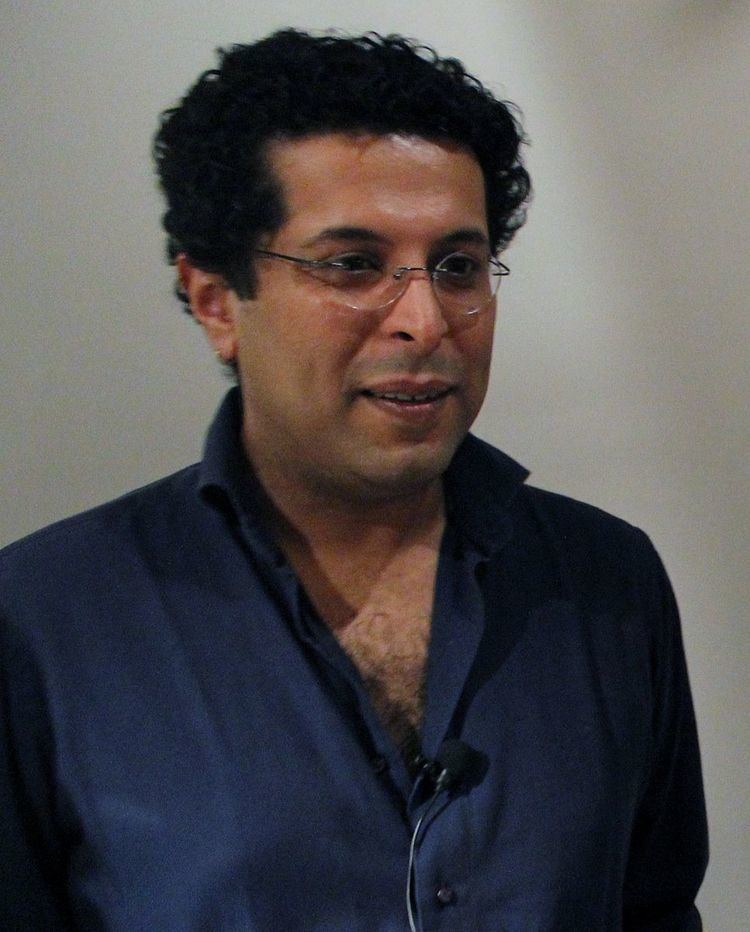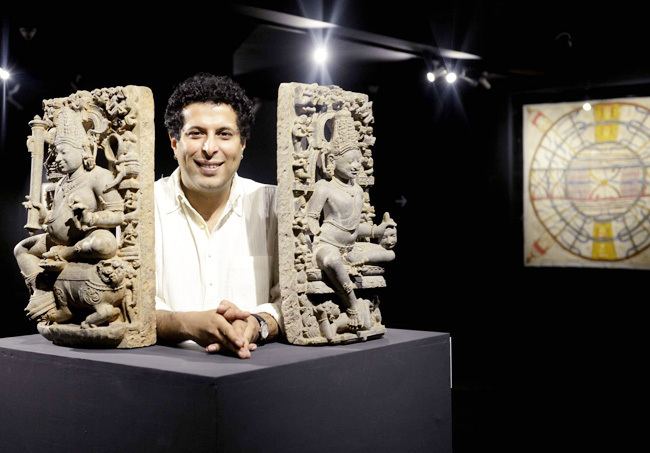Role Art Historian Name Naman Ahuja | Nationality Indian | |
 | ||
Born 1974 Website www.indianiconography.info Alma mater SOAS, University of London Books Divine Presence: Arts of India and the Himalayas | ||
Naman ahuja professor visual studies school of arts aesthetics jnu delhi
Naman P. Ahuja (born 1974) is an art historian and curator based in New Delhi. He is Professor of Indian Art and Architecture at Jawaharlal Nehru University, New Delhi where his research and graduate teaching focus on Indian iconography and sculpture, temple architecture and Sultanate-period painting. He is also the Editor of Marg, India’s leading quarterly magazine and journal on the arts, published from Mumbai. His studies on privately owned objects—terracottas, ivories and small finds—have drawn attention to a wide range of ritual cultures and transcultural exchanges at an everyday, quotidian level. He has curated several exhibitions, most notably The Body in Indian Art and Thought, and published books, including The Making of the Modern Indian Artist Craftsman: Devi Prasad. He is an academic who creates a work of art as he teaches it.
Contents
- Naman ahuja professor visual studies school of arts aesthetics jnu delhi
- Naman ahuja the body in indian art
- Early life
- As Professor
- Curator
- Views
- Publications
- References

Naman ahuja the body in indian art
Early life

Professor Ahuja received his Ph.D. in Art and Archaeology from the School of Oriental and African Studies, at the University of London in 2001. His thesis was titled ‘Early Indian Moulded Terracotta: The Emergence of an Iconography and Variations in Style, Second Century BC to First Century AD’. A specific research contribution was his work on votive figurines and other imagery from the post-Mauryan period which brought to light a pantheon of Indian gods and goddesses that were irrevocably transformed after AD 200.
As Professor
Professor Ahuja has been tutor of the SOAS/Christie’s Asian Arts Course, the SOAS M.A. course in Religious, Fine and Decorative Arts of South Asia, and the British Museum’s Diploma in Asian Art. He has held Visiting Professorships and Fellowships at the University of Zurich, the Ashmolean Museum at the University of Oxford, the Kunsthistorisches Institut in Florence, the University of Alberta in Edmonton and Nehru Memorial Museum and Library, New Delhi. Currently he teaches at Jawaharlal Nehru University, New Delhi. His research and graduate teaching covers a diverse range of subjects including periods of artistic/visual exchange in pre-modern societies like ancient Gandhara, ancient temple statuary and iconography and the manuscripts painted in the Sultanate period in India.
Curator
As fellow of the Ashmolean Museum, Oxford, he authored a comprehensive catalogue of their collections of ancient Indian statuary and archaeological material. He has also held a curatorial position at the British Museum apart from curating several independent exhibitions in India and abroad on themes ranging from ancient to contemporary art. His research has led to several publications on ancient Indian art and religion, including ‘Changing Gods, Enduring Rituals: Observations on Early Indian Religion as seen through Terracotta Imagery c. 200 BC- AD 200.’ His book, The Making of the Modern Indian Artist-Craftsman: Devi Prasad (Routledge, 2011) provided a case-study of the impact of the Arts and Crafts Movement on India. Most recently, he curated the exhibition ‘The Body in Indian Art and Thought’ which was held at Palais des Beaux Arts in Brussels and National Museum, New Delhi The catalogue for the exhibition became The Body in Indian Art and Thought (Ludion, Antwerp, 2013, also in French and Dutch), exploring a variety of fundamental approaches to the aesthetics of anthropomorphic representation in India and the larger ideas that drive people to make images. William Dalrymple, in an article on the exhibition in The Guardian, claimed that ‘it is unlikely that a show like this will be put on again in our lifetime.’
Views
On March 18, 2012 at the convention "Collecting Ancient Art in the 21st Century", Naman said that in many countries modern development proved as serious a threat to archaeological sites as looting. It was imperative for collectors to engage with the views of archaeologists and challenging collector groups to find ways to help source countries stop looting. He is also vocal about the role of public officials in national cultural institutions. Such an idea of personal and public roles has also seen him strongly advocate a revision in the Antiquities law.
